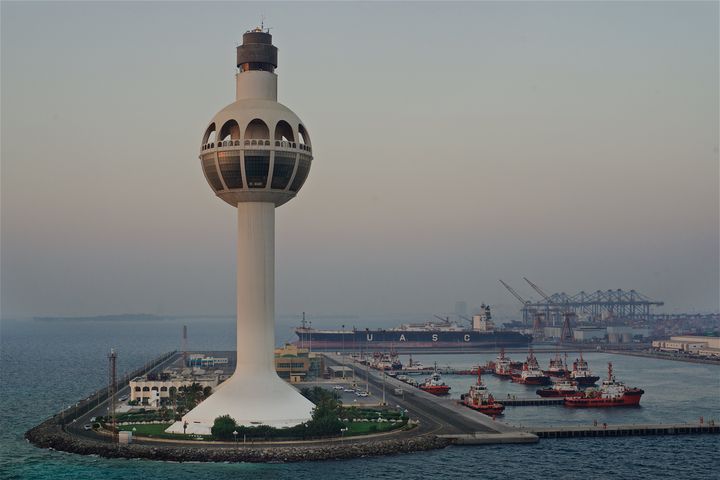Two missiles have set fire to an Iranian oil tanker in what is being described as a “terrorist attack”, Iran’s foreign ministry has confirmed.
The vessel, owned by National Iranian Oil Company (NOIC), suffered heavy damage and was leaking oil into the Red Sea some 60 miles from Jeddah, Saudi Arabia, unnamed sources told the country’s Students News Agency ISNA.
“Those behind the attack are responsible for the consequences of this dangerous adventure, including the dangerous environmental pollution caused,” Foreign Ministry spokesman Abbas Mousavi told state TV.
“Experts believe it was a terrorist attack,” a source added.
The Nour news agency, which is close to the Iranian Revolutionary Guard Corps, said the crew was safe.
NIOC named the ship as the Sabiti, a Suezmax vessel, after initial reports said it was the Sinopa.
Ship tracking data showed the Sabiti in the Red Sea and heading south under its own power, bound for Larak, off Iran’s southern Gulf coast.
The US Navy’s Fifth Fleet, which operates in the region, said it was aware of media reports about the tanker, but did not have any further information at this time.

Tensions have been high between regional foes Iran and Saudi Arabia since an attack on the Kingdom’s two oil facilities on September 14 that caused fires and damage and shutting down 5.7 million barrels per day (bpd) of production - more than 5% of global oil supply.
Yemen’s Houthi group claimed responsibility for the attacks, but a US official said they originated from southwestern Iran. Riyadh blamed Tehran. Iran, which supports the Houthis in Yemen’s war, has denied any involvement.
Escalating tensions in the Gulf, a timeline...
May 10 - The U.S. Maritime Administration warns of possible Iranian attacks on shipping in the Gulf.
May 12 - Four ships, including two Saudi oil tankers, are attacked in the Gulf just outside the Strait of Hormuz, a major oil shipping route. US officials pin the blame on Iran, a charge Tehran denies.
May 14 - Saudi Arabia said armed Houthi drones struck two oil pumping stations in the kingdom, causing a fire which was contained and minor damage at one pump station, but did not disrupt oil output or exports. Saudi Aramco said it temporarily shut the East-West pipeline, known as Petroline, to evaluate its condition.
May 21 - A Houthi drone struck an arms depot in Saudi Arabia’s Najran airport near the Yemeni border, causing a fire. The Saudi-led military coalition said a civilian facility in Najran province was attacked with an explosive-laden drone.
June 12 - Houthis drones struck Abha civilian airport in southern Saudi Arabia, wounding 26 people.
June 13 - Two tankers are attacked south of Hormuz. Washington again blames Iran and Tehran denies any role.
June 19 - The Houthis launched a projectile on June 19 targeting a power transformer station near a desalination plant in Shuqaiq in southern Saudi Arabia. The strike led to a small fire that was quickly doused and did not impact operations.
June 20 - Iran shot down an unmanned U.S. surveillance drone.
June 23 - The Saudi-led military coalition said the Houthis launched an attack on Abha airport, killing one person and wounding 21 others.
July 4 - British Royal Marines seized Iranian supertanker Grace 1 near Gibraltar on July 4 on suspicion of violating European Union sanctions on Syria.
July 10 - British warship HMS Montrose on July 10 issued verbal warnings and aimed guns at boats believed to belong to Iranian Revolutionary Guards which approached BP (BP.L) oil tanker British Heritage at the northern entrance of Hormuz.
July 18 - The United States said USS Boxer destroyed an Iranian drone in the Strait of Hormuz after it threatened theU.S. Navy ship. Iran denied it has lost a drone.
July 19 - Iran seized British-operated oil tankers Stena Impero and Mesdar, the latter released after receiving a warning from Iranian authorities.
Aug. 15 - Gibraltar freed the Grace 1, renamed the Adrian Darya 1, on August 15 after receiving assurances from Tehran that the ship would not discharge its oil in Syria. On Sept 8 Iran said it unloaded its cargo somewhere on the Mediterranean coast. On Sept. 11 Iran said the vessel had been sold at sea to a private company and denied Tehran had broken the assurances.
Sept. 14 - The Houthis claim responsibility for Sept 14 drone attacks on Saudi Aramco plants in Abqaiq and Khurais. The plants lie in the heartland of Saudi Arabia’s oil industry, including the world’s biggest petroleum processing facility.
